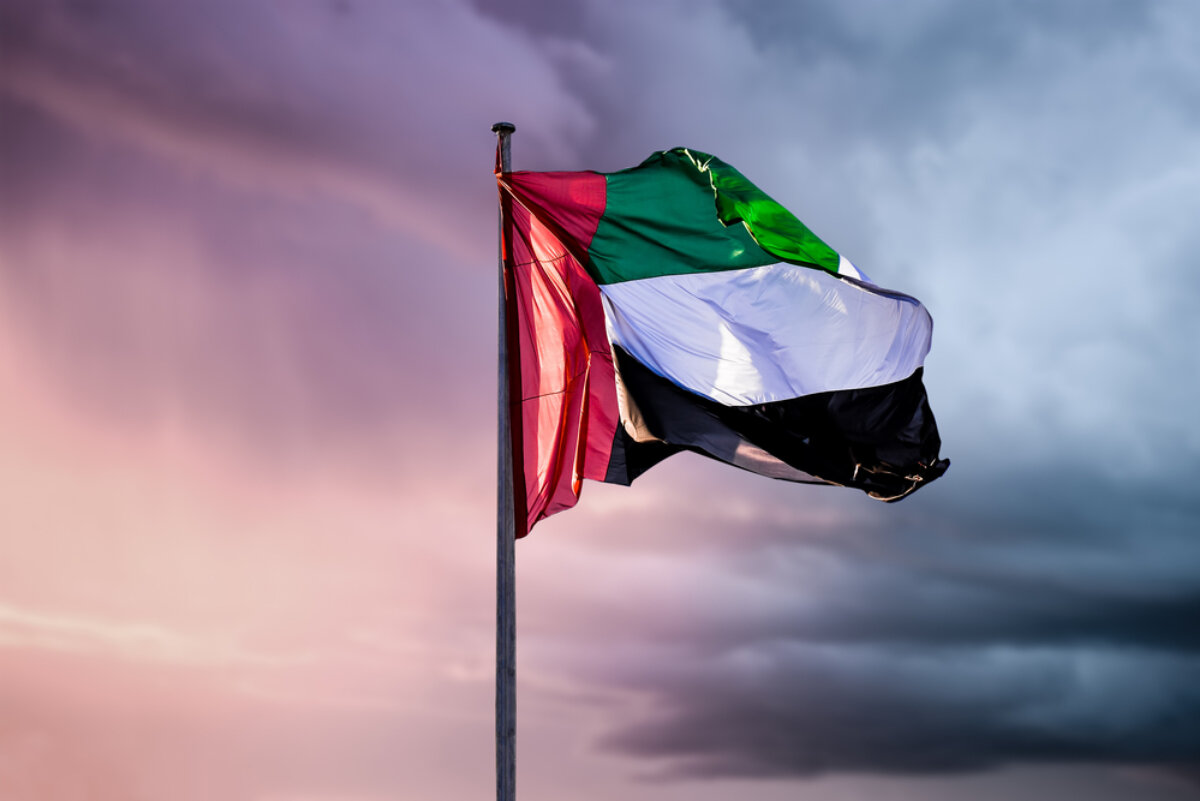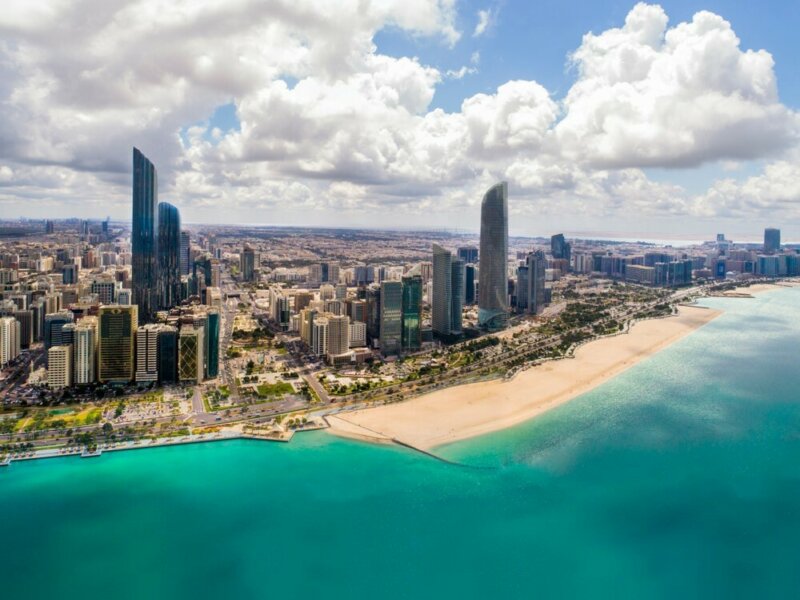The UAE’s push toward the Indo-Pacific
While not a new trend, the bolstering of bilateral ties by the UAE with Indo-Pacific actors has recently been gaining new speed, due to the growing strategic relevance of the region. The new France-India-UAE trilateral cooperation initiative is a case in point

The trilateral cooperation initiative recently launched by France, India and the United Arab Emirates (UAE) showcases the UAE’s role as an international player that can concurrently engage with multiple partners, including in the Indo-Pacific region. It is no coincidence that South Korean President Yoon Suk Yeol chose the UAE for his first visit abroad in 2023. On that occasion, the two countries stressed their determination to enhance their strategic partnership in several domains – including renewables, climate change, commercial and military cooperation – and increase joint efforts in a wide range of mutually beneficial areas, spanning from infrastructures to science and technology[1]. The UAE’s bolstering of economic ties – especially in the non-oil sector – with South Korea, China and other Asian players is not a new trend. From the UAE’s (and Gulf Cooperation Council’s - GCC) perspective, the new international order is less West-dominated and more networked than before. Expected to represent more than 50 percent of the global Gross Domestic Product (GDP) by 2040, Asia is increasingly becoming the new economic global power centre of the 21st century. In this context, the UAE aims to strengthen its connections with the Indo-Pacific region, thus cementing its position as a commercial, financial and energy hub at the crossroads of Asia, Africa and Europe.
The fact that the area known until a decade ago as Asia-Pacific is now defined as Indo-Pacific reveals geopolitical implications. Japanese former Prime Minister Shinzo Abe is credited with being one of the first to advance the vision of the Indian Ocean Region (IOR) and the Pacific region as two intertwined geographical spaces. The idea of grouping like-minded partners in the “Indo-Pacific” area to share common values started to take hold after his 2007 speech to the Indian Parliament – “Confluence of Two Seas”. The logic underpinning this shift in terminology could be summarised in three main points[2]: the emergence of new interactions and interests encompassing the Pacific and the Indian Ocean; the rise of India as a new emerging power in Asia (India is on track to become the world’s third-largest economy and overtake China as the world’s most populous country), leading the IOR towards greater geostrategic relevance; and China’s growing influence beyond the Asia-Pacific region, towards the IOR, especially in the framework of the 2013 China-sponsored Belt and Road Initiative (BRI).
The UAE has proved capable of expanding diplomatic and economic ties with virtually all Indo-Pacific actors over the last few years. Beyond China, with which bilateral relations were upgraded to a Comprehensive Strategic Partnership (CSP) in 2018, the country has also strengthened its ties with India, Indonesia, Japan and South Korea, among others. In keeping with the goals set in the UAE Centennial 2071 plan, the Principles of 50 and the We the UAE 2031 Plan, this shift towards the Indo-Pacific reflects the UAE’s “Economy First” approach and the country’s ambition to integrate more deeply into the global market. Although the energy sector will continue to be an important driver of the UAE’s policy towards the Indo-Pacific – given the dependence of Asia’s great and middle powers on GCC countries for energy supplies – diversifying into non-oil sectors is at the core of the UAE’s economic strategy vis-à-vis the Indo-Pacific.
As for Japan, the 2022 UAE-Japan Comprehensive Strategic Partnership agreement document (the latest step in the CSP initiative announced in 2018) focuses on bolstering relations between the two countries by encouraging further diplomatic, economic, political, trade and investment collaborations on high-priority sectors, including agriculture, climate change, education, technology, as well as defense and security[3]. The UAE is Japan’s top crude oil supplier, providing over 20 percent of its crude oil needs. Beyond the hydrocarbon sector, ongoing joint initiatives between the two countries in hydrogen and low-carbon blue ammonia highlight their ambition to cooperate on new technologies to reduce carbon emissions[4]. This is also the case with South Korea: while the UAE is the country’s second largest oil supplier, bilateral cooperation is progressively focusing on clean energy, such as hydrogen and nuclear power, as well as other advanced industries, including healthcare, agriculture, space, technology and defence.
Additionally, the UAE signed the Comprehensive Economic Partnership Agreement (CEPA) with Indonesia, with the goal to accelerate investments in common priority fields, such as agriculture and energy. The agreement aims to increase bilateral non-oil trade to US$ 10 Billion in the next five years[5]. Currently the largest and most dynamic economy in the Association of Southeast Asian Nations (ASEAN), Indonesia is set to play a prominent role in the Indo-Pacific region in the coming years. Bilateral commercial ties between the two countries started developing predominantly since the 2010s, with the UAE investing billions of dollars across a range of Indonesian strategic sectors, such as port infrastructures, telecommunications and energy transition. Cultural factors – Indonesia is a majority Muslim country – have further contributed to cementing ties between the two countries.
India is another textbook example of the UAE’s deep integration in the Indo-Pacific region, as well as of its ability not to get trapped in the competition among Asian powers, whether at sub-regional (e.g. India vs. Pakistan) or regional scale (e.g. India vs. China). The UAE’s proximity to Beijing or Islamabad has not prevented it from progressively moving closer to India, especially in the aftermath of Narendra Modi’s election as Prime Minister in 2014. In this context, the establishment, in 2021, of a new grouping made up of Israel, India, the UAE and the US (also known as “the I2U2 Group”), the signature of the UAE-India CEPA in 2022, and the recent France-India-UAE trilateral initiative aiming to cement cooperation in sectors of common interest (renewables, environmental sustainability, health security and defense among others) could be considered the latest steps in an ever-deeper diplomatic and economic engagement which started in 2017 with the launch of the UAE- India Comprehensive Strategic Partnership.
Given its growing significance, the IOR is a pivot area for both the UAE and India’s economic growth and geopolitical influence. The two countries are aligned in deepening cooperation within this region, home to the most important sea-line communications and strategic chokepoints crossing Africa, Asia and Europe. Major topics discussed during the last I2U2 Virtual Summit and on the sidelines of the 77th United Nations General Assembly in 2022 included developing an increasingly interconnected environment, through sharing expertise and know-how, to jointly act against transnational challenges such as maritime security, energy, food, and health security. India and the UAE are also members of the Indian Ocean Naval Symposium (IONS) and the Indian Ocean Rim Association (IORA). These initiatives focus on increasing maritime cooperation, firstly by providing space for the discussion of regionally relevant maritime issues among navies of IOR littoral states and, secondly, by strengthening regional cooperation and sustainable development within the region[6]. Therefore, it could be easily argued that the Gulf country is “favorably geographically positioned” in the Indo-Pacific area. It has to be noted that from an Asian perspective, the Arabian Peninsula is referred to as West Asia rather than Near East and, for a power like India, this link appears particularly clear. As declared by former Indian Prime Minister Manmohan Singh: “the Gulf region is a part of our natural economic hinterland[7]”.
While the Indo-Pacific area is increasingly becoming the main theatre of a competition between Beijing and Washington, as well as the epicenter of struggles between continental and regional powers (e.g. India vs. China and India vs. Pakistan), the UAE is managing this growing polarisation – and the consequent confrontational rhetoric – by implementing a balanced foreign policy towards the main regional players.
Rejecting the narrative of the competition among great powers taking place across the two oceans and its zero-sum game implications[8], the UAE’s policy has rather been focused on seeking multiple partnerships under a win-win formula[9]. For this reason, while on one side the UAE has been supporting China’s BRI policy in the Arabic Peninsula, on the other it has also demonstrated the will and the ability to diversify strategic relations with China’s rivals within the Asian Continent.
[1] South Korea’s Yoon Suk Yeol meets President Sheikh Mohamed in Abu Dhabi during a state visit, The National, January 14, 2023. https://www.thenationalnews.com/uae/government/2023/01/14/south-korean-president-arrives-in-abu-dhabi-for-state-visit/
[2] Mohamed Fayez Farahat, Indo-Pacific as a New Theatre for International Policies and its Impact on the Arabian Gulf Region, Emirates Policy Center, 8 June 2020. https://epc.ae/en/details/featured/indo-pacific-as-a-new-theater-for-international-policies-and-its-impact-on-the-arabian-gulf-region
[3] Sultan Al Jaber, Japanese Minister of Foreign Affairs sign UAE-Japan comprehensive strategic partnership agreement document, WAM, September 28, 2022. https://wam.ae/en/details/1395303087777
[4] UAE and Japan strengthen bilateral ties in various sectors, Gulf Business, June 8, 2022. https://gulfbusiness.com/uae-and-japan-strengthen-bilateral-ties-in-various-sectors/
[5] Rahman, Fareed, Sarmad Khan, and Aarti Nagraj, UAE and Indonesia sign a comprehensive economic partnership agreement, The National News, July 1, 2022. https://www.thenationalnews.com/business/economy/2022/07/01/uae-and-indonesia-sign-comprehensive-economic-partnership-agreement/
[6] Indian Ocean Naval Symposium, official website. https://www.ions.global/; Indian Ocean Rim Association, official website. https://www.iora.int/en
[7] N. Janardhan, Asian in an Emerging Gulf Collective Security Framework, in: Li-Chen Sim and Jonathan Fulton (edited by), Asian Perceptions of Gulf Security, Routledge, 2022, pp.157-173.
[8] Jean-Loup Samaan, Arab Gulf States in the Indo-Pacific, in: B.J. Cannon and K. Hakata (edited by), Indo-Pacific Strategies – Navigating Geopolitics at the Dawn of New Age, Routledge, 2021, pp. 198- 214.
[9] Ebtesam Al-Ketbi, The UAE Power Building Model: Mohamed bin Zayed’s Vision, Emirates Policy Center, 2022, p.20.



